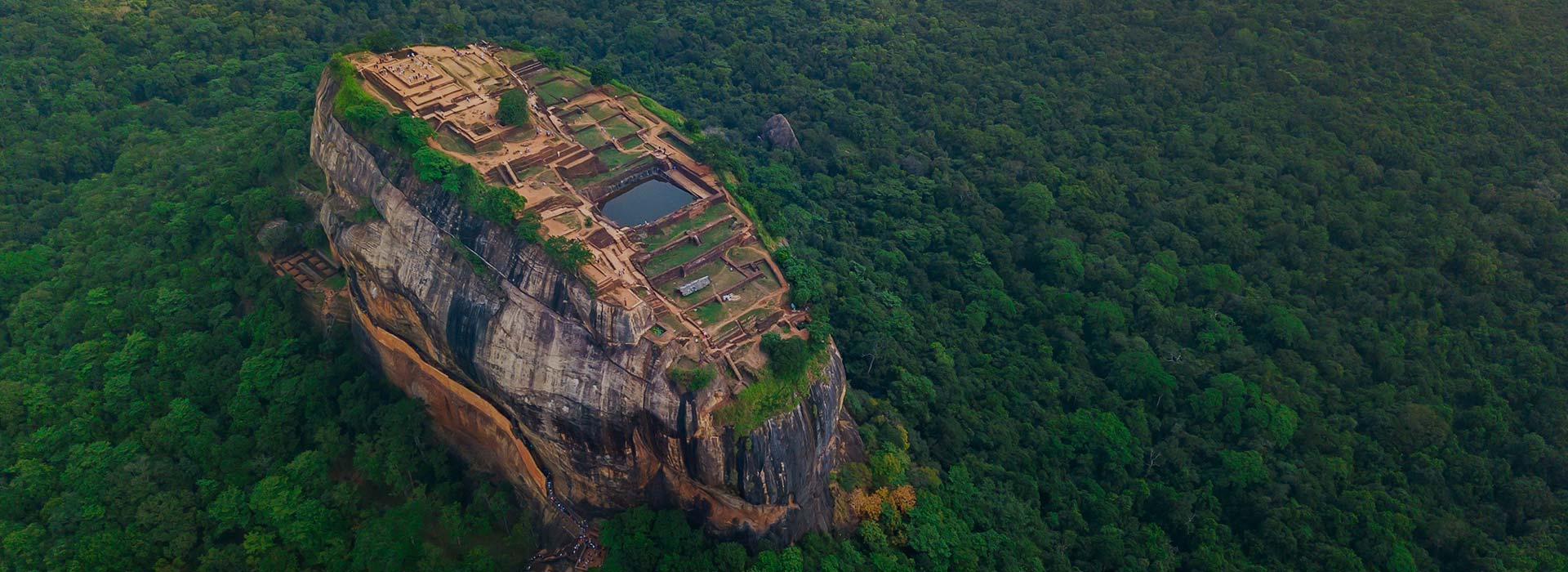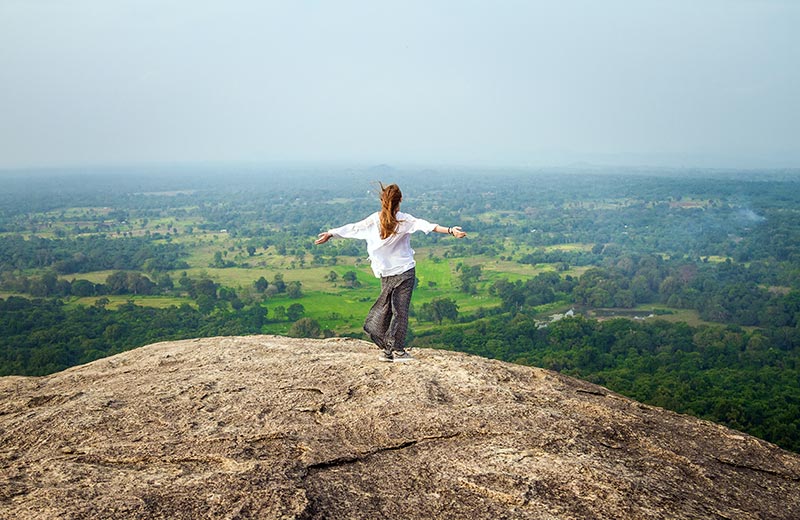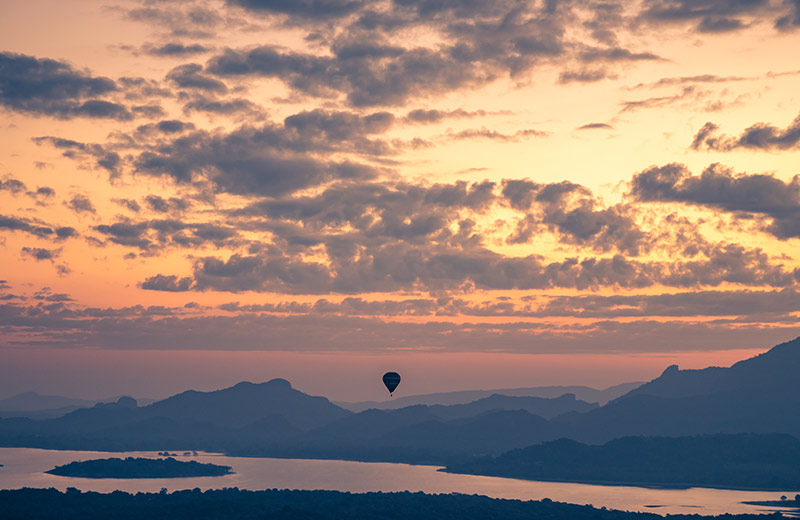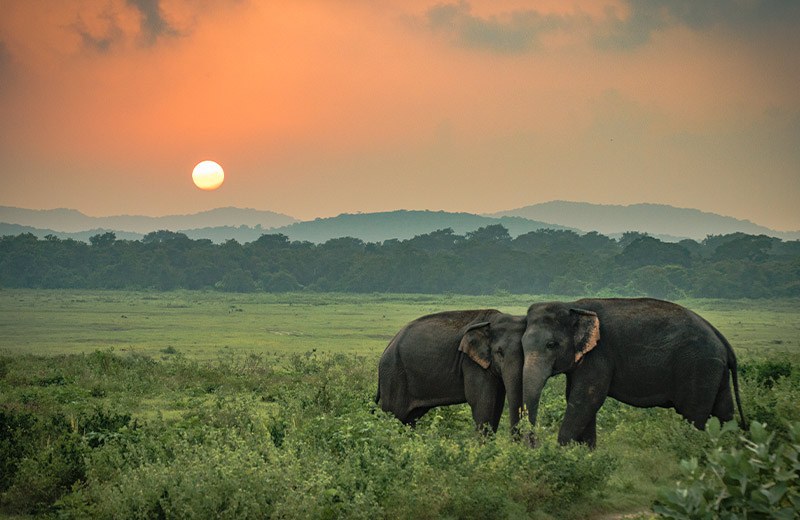Sigiriya Rock Fortress
Sigiriya, now a world-renowned architectural wonder of the Ancient World and UNESCO World Heritage Site, is one of the most popular destinations in Sri Lanka—and for good reason! Located along the path from Dambulla to Habarane, is the Lion Rock (locally referred to as Sigiriya), named so for the once-formidable lion that stood sentry at its entrance. Today, only its gigantic paws remain.
A Reinforced Fortress
Formed by a long-extinct volcano, the rock plateau towers over the greenery that envelopes its base and surroundings at 660ft. Atop the rock plateau are the ruins of an ancient rock fortress constructed under the orders of King Kasyapa in the 5th century CE. At its prime, the rock fortress was a reinforced citadel, and certainly an incredible architectural feat for the time.
An Engineering and Architectural Marvel
Though much of its grandeur had been eroded over time, the essence of its beauty and complexity remains intact to this day. Frescoes of maidens adorn the inner walls, and the fortress’ hydraulic system is a thing of interest for many, including the dams, lakes and underground water pumps that were constructed within its borders.
The Mirror Wall is particularly fascinating as, back in the day, it was said to be a highly reflective surface that has now adopted a coppery finish, and is no longer reflective. But the writings on it by its ancient visitors date back to the 6th century!
Though the citadel no longer serves its original purpose, it’s still a testament to the skills of its craftsmen who managed to pull it off so many centuries ago.
To truly enjoy the experience, try to visit earlier on in the day to avoid crowds, and do look out for the boulder gardens surrounded by caves, which used to serve as a monastery before King Kasyapa transformed the rock into his fortress.



